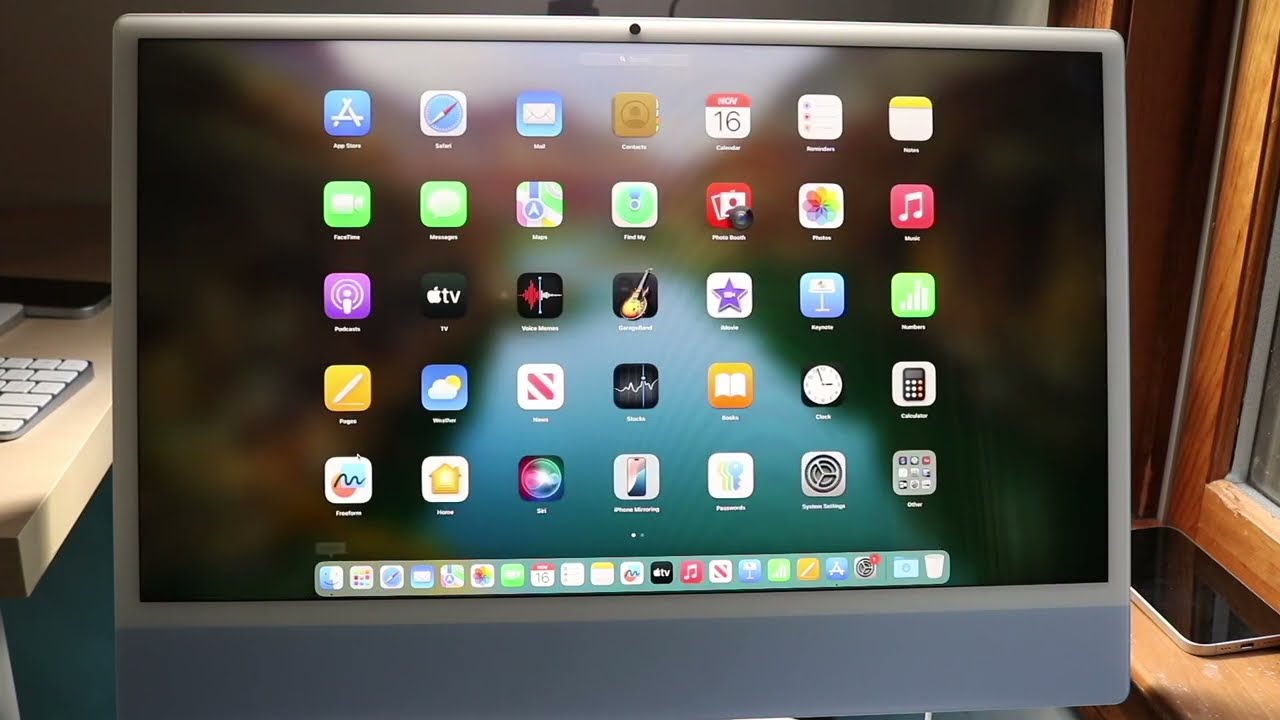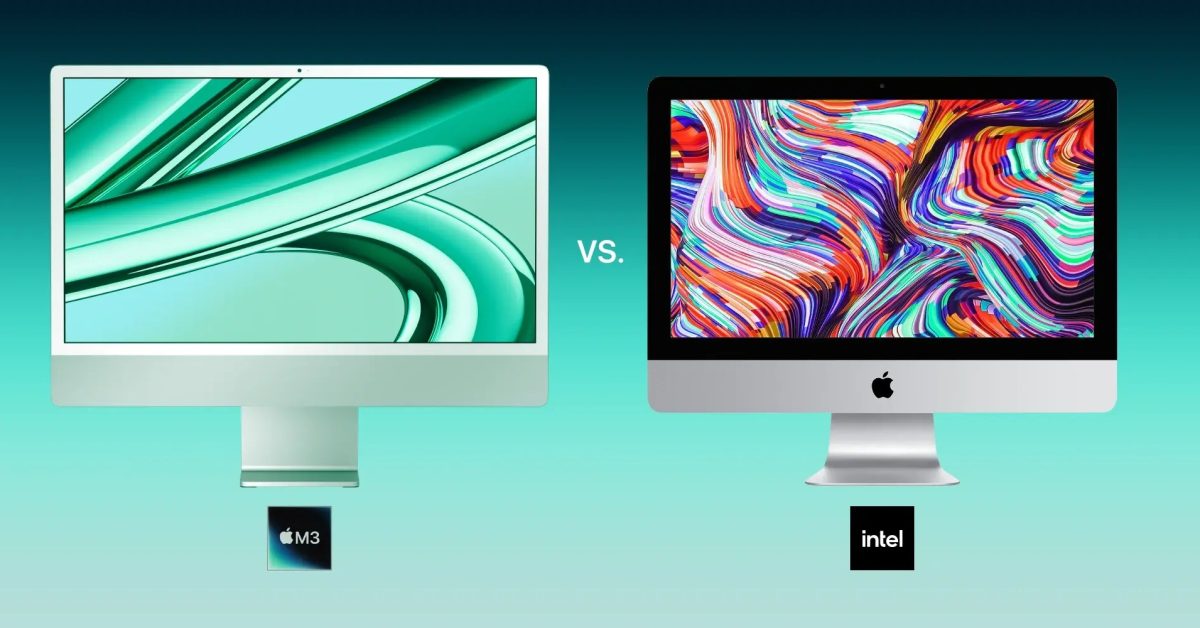
M4 iMac 2024 Review: Performance, Design, and Features Unveiled
The Apple M4 iMac (2024) Review explores the anticipated features and performance of Apple’s latest all-in-one desktop computer, unveiling whether this new iteration can redefine user expectations or if it remains a familiar upgrade. As we dive into its design, performance, and overall user experience, it becomes essential to understand if the M4 iMac will entice both loyal Apple customers and potential new users.
Design and Display: A Familiar Yet Refined Aesthetic

When it comes to design, the iMac has consistently set the standard for elegance and functionality in desktop computers. With the release of the Apple M4 iMac (2024), we can expect this trend to continue as Apple embraces refinement over radical changes. The anticipation around the aesthetics of the M4 iMac lies in whether it introduces any noticeable modifications while retaining the beloved characteristics of its predecessors.
The Signature iMac Characteristics
Apple’s design ethos emphasizes minimalist beauty, with the iMac epitomizing this philosophy through its sleek form factor. Users have grown accustomed to the iMac’s flat rear and integrated stand, which provide a seamless blend of form and function. With the 2024 model, one can anticipate that these defining traits will largely remain unchanged, offering a sense of familiarity to existing users.
Additionally, the thin bezels surrounding the display are expected to persist, creating an immersive viewing environment. As for color options, there’s a possibility of fresh hues joining the existing lineup, allowing users more freedom to choose a machine that reflects their personal style. This expansion could further enhance the visual allure of the M4 iMac, appealing to those who appreciate aesthetics as much as performance.
Enhanced Display Technology
The display is likely to be a standout feature in the Apple M4 iMac (2024), with rumors suggesting enhancements such as increased resolution or a switch to mini-LED backlighting. This would elevate the visual experience by providing better contrast and improved black levels, making it particularly attractive to creatives whose work relies heavily on color accuracy.
In addition to these upgrades, the already impressive color fidelity and wide gamut seen in previous models should either be retained or enhanced. This means designers, photographers, and videographers will benefit from exceptional visual experiences that translate into vibrations of detail in their work. The expectation for the display to act as a canvas for creativity adds another layer of excitement around the upcoming iMac.
User Interaction and Experience
A refined design and powerful display ultimately contribute to the overall user experience. The combination of intuitively placed ports, a responsive touchpad, and a high-quality keyboard plays crucial roles in how efficiently users interact with the device. The M4 iMac is likely to maintain these considerations, ensuring that users feel comfortable during long hours of use, whether they are working on projects, consuming media, or simply browsing the web.
As we explore further aspects of this innovative machine, one can’t help but wonder how well-rounded the Apple M4 iMac (2024) will be when integrating advanced technology with user-friendly design.
M4 Chip: A Leap Forward in Performance?

Central to the Apple M4 iMac (2024) is the highly anticipated M4 chip. Following the success of its predecessors, the M1 and M2 chips, there is considerable excitement about what the M4 chip will bring to the table regarding performance and efficiency.
Architectural Innovations
While specific details are still emerging, it’s reasonable to expect that the M4 chip will incorporate architectural innovations aimed at delivering significant improvements in CPU and GPU performance. For professionals who rely on demanding applications, the M4 chip will likely provide acceleration in rendering speeds, smoother multitasking capabilities, and quicker response times across various tasks.
An upgraded neural engine is also anticipated, which could enhance the performance of machine learning tasks. Consequently, features like Siri, image editing, and video processing could become even more streamlined, leading to a better user experience overall. The enhancements in this area signal Apple’s commitment to pushing the boundaries of what is possible with custom silicon.
Energy Efficiency and Thermal Management
Apart from raw performance, energy efficiency is a critical factor that could define the M4 iMac experience. As energy efficiency improves, users may enjoy longer operating durations without the need for constant charging. Moreover, with an increase in efficiency comes the benefit of reduced heat output, resulting in a quieter and cooler work environment. This aspect is fundamental for creative professionals who often work in silence or require their machines to run for extended periods.
Thermal management is not just about comfort; it affects performance consistency. If the M4 chip can maintain its peak performance without overheating, users can expect a seamless experience, even when executing resource-intensive tasks.
Real-World Application Scenarios
What does this mean for real-world applications? Creatives will benefit from faster rendering times in software like Adobe Creative Suite or Final Cut Pro, while developers working with complex codebases can expect reduced compile times. Everyday users engaged in gaming, multimedia consumption, or web browsing will notice smoother interactions and fewer hiccups in performance.
In essence, the arrival of the M4 chip stands to revolutionize how users interact with the iMac, opening doors to possibilities previously limited by hardware constraints. Overall, this leap in performance reinforces the notion that the Apple M4 iMac (2024) is not just an evolution, but a carefully considered advancement in Apple’s computing lineage.
Memory and Storage: Ample Capacity for Your Needs
As with any modern computing solution, memory and storage play pivotal roles in user experience. The Apple M4 iMac (2024) is expected to cater to a diverse range of user needs, ensuring that individual requirements are met through various configurations.
Unified Memory Architecture
One of the standout features of Apple silicon is its unified memory architecture, allowing seamless sharing of memory between the CPU and GPU. This unique approach enhances performance and efficiency, making multitasking significantly smoother. Given this technology, the base model of the M4 iMac might start with adequate 8GB or 16GB options, while higher-end configurations could potentially offer even larger capacities.
For creatives who rely on memory-intensive applications, having access to 64GB or more of unified memory will be invaluable. It enables them to run multiple software programs simultaneously without experiencing slowdowns, thereby enhancing productivity.
Fast and Reliable Storage Solutions
Storage is equally important, especially for users dealing with high-resolution media files. The M4 iMac is expected to come equipped with fast SSDs, starting at a baseline of 256GB, with options escalating up to 1TB, 2TB, or even larger capacities. This range ensures that users have ample room for applications, documents, and media without needing external drives.
Speed and reliability are crucial factors in real-world usage. The SSDs used in the iMac are designed for rapid application launch times and quick file transfer speeds, contributing to a smooth overall experience. Whether you’re importing large video files or booting up demanding software, users can expect minimal wait times.
Tailoring the Experience
With these diverse configuration options, the Apple M4 iMac (2024) provides users with the flexibility to tailor their devices to suit their specific needs. This customization allows individuals to balance performance and cost effectively, making the M4 iMac accessible to students, professionals, and casual users alike.
Moreover, as reliance on cloud services continues to grow, users may find themselves increasingly drawn to larger storage capacities for local work. Having substantial onboard storage reduces dependency on external drives, allowing for a more organized and efficient workstation. In essence, the combination of advanced memory architecture and fast storage solutions positions the M4 iMac as a versatile choice for a wide array of users.
Connectivity and Ports: Catering to Modern Peripherals
In today’s tech-driven world, connectivity plays an essential role in maximizing a computer’s versatility. The Apple M4 iMac (2024) is anticipated to maintain a strong focus on providing relevant port options to cater to modern peripherals while balancing aesthetic simplicity.
Assessing Current Port Configurations
Current iterations of the iMac have been equipped with Thunderbolt/USB4 ports, enabling high-speed data transfer alongside support for external displays and other peripherals. While the specifics surrounding the port configurations for the M4 iMac remain under wraps, it is likely that Apple will retain the existing offerings.
This decision not only ensures compatibility with an array of devices but also maintains a clean design—an essential factor for many iMac users. However, some users hope for additional ports, such as USB-A, HDMI, or card readers, to enhance convenience without compromising the aesthetic.
Potential Innovations in Connectivity
It’s plausible that Apple may introduce newer and more efficient connectivity standards. Enhanced wireless capabilities, such as Wi-Fi 6E and Bluetooth 5.2, could accompany the M4 iMac, allowing for faster connections to wireless peripherals and networks. These advancements represent a leap forward in connectivity, enhancing the user experience through reliable and rapid connections.
Furthermore, improving wired connections can still play a vital role for professionals who demand stable connections for their workflow. Users relying on high-bandwidth applications will appreciate having the best available technology to meet their needs.
Future-Proofing Your Investment
The emphasis on connectivity is not merely about present-day capabilities; it’s also about future-proofing your investment. By maintaining versatile and robust connectivity options, the Apple M4 iMac (2024) ensures that it can adapt to evolving technologies and peripheral developments in the years to come.
As users expand their digital ecosystems, ensuring that their primary device integrates seamlessly with new tools and experiences becomes paramount. Ultimately, the level of connectivity offered by the M4 iMac will shape how well users can maximize their productivity and creativity.
Camera and Audio: Enhanced Communication and Entertainment
The significance of camera and audio quality cannot be overstated in an era where remote communication has become commonplace. The Apple M4 iMac (2024) is poised to build upon its predecessors’ notable advancements in these areas, enhancing the overall user experience.
Upgraded Camera Capabilities
One of the major selling points of recent iMac models has been the improved camera systems. The M4 iMac is expected to feature an upgraded camera with a higher resolution sensor and enhanced low-light performance. This enhancement is particularly beneficial for video conferencing—a crucial aspect of remote work, education, and social interaction.
As users engage in virtual meetings, webinars, and online classes, the quality of video streaming becomes vital. An improved camera on the M4 iMac can ensure that users present themselves in the best possible light. Whether it’s for professional calls or personal chats with family and friends, a higher-quality image fosters better communication and rapport.
Immersive Audio Experience
Audio quality is equally important, and the M4 iMac is expected to deliver improvements in this domain as well. Enhancements might include better speaker drivers or an advanced spatial audio system, providing an immersive listening experience. This advancement will be beneficial not only for casual media consumption but also for music producers and content creators who rely on accurate sound reproduction.
By prioritizing audio, Apple recognizes the increasing importance of entertainment and communication in users’ daily lives. Whether you’re enjoying a movie, engaging in a podcast, or participating in a conference call, exceptional audio quality contributes to an enriching experience.
Integrating Software Dynamics
As the hardware progresses, software integration becomes equally imperative. The M4 iMac is expected to ship with macOS, known for its user-friendliness and seamless synchronization with other Apple products. This ecosystem synergy allows camera and audio functionalities to be utilized optimally in various applications, tailored to the user’s preferences.
Advanced features, coupled with cutting-edge camera and audio technologies, signify that the Apple M4 iMac (2024) will not only be a computing powerhouse but also an essential hub for communication and entertainment in everyday life.
Conclusion
The Apple M4 iMac (2024) presents itself as a solid refinement of an already excellent machine. While it aims to deliver substantial performance improvements attributed to the new M4 chip, it also promises to enhance the user experience through subtle upgrades in design, display technology, memory, storage, connectivity, camera, and audio.
However, despite the anticipated advancements, potential buyers should manage expectations regarding a complete redesign or revolutionary changes. Instead, the M4 iMac appears to be a carefully considered step forward, promoting the idea that evolution, rather than revolution, is key to Apple’s continued success.
Ultimately, the decision to invest in the M4 iMac will hinge on individual needs and budget. For creatives, professionals, everyday users, and students seeking a powerful, stylish, and capable all-in-one desktop, the M4 iMac will undoubtedly emerge as a compelling option. Nevertheless, those hoping for dramatic departures or radical feature innovations may find themselves waiting for future iterations.
In conclusion, the Apple M4 iMac (2024) encapsulates Apple’s dedication to refining and optimizing desktop computing, reaffirming its status as a formidable player in the technology landscape.




Comments (0)